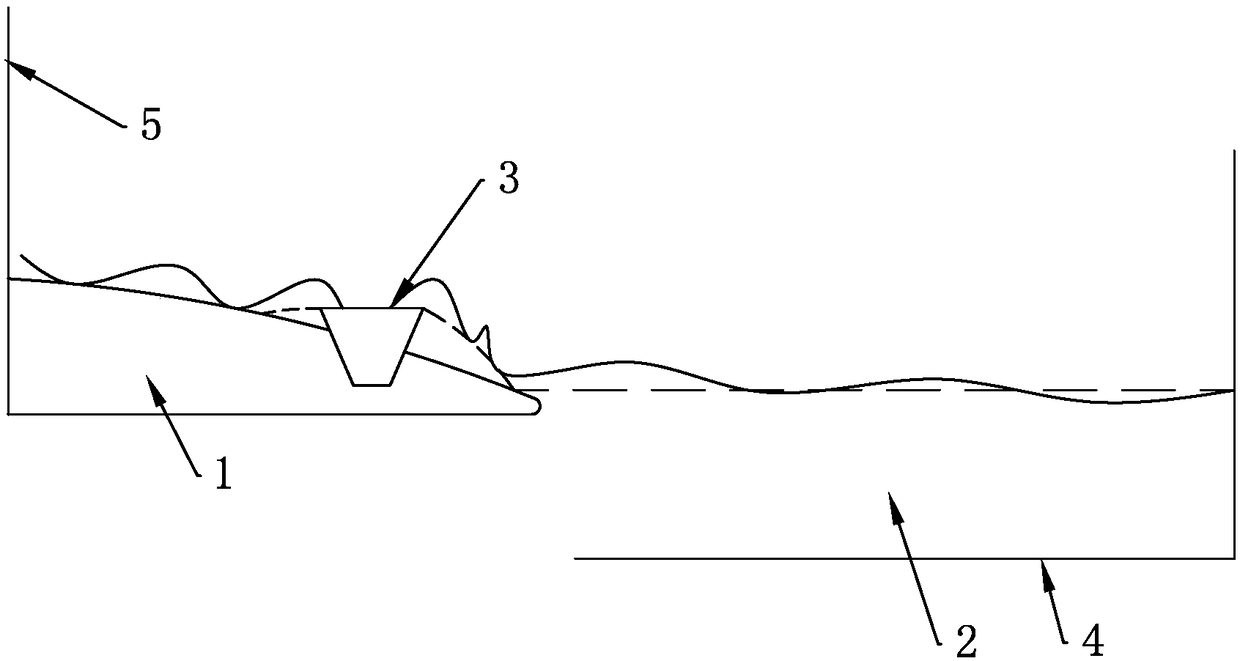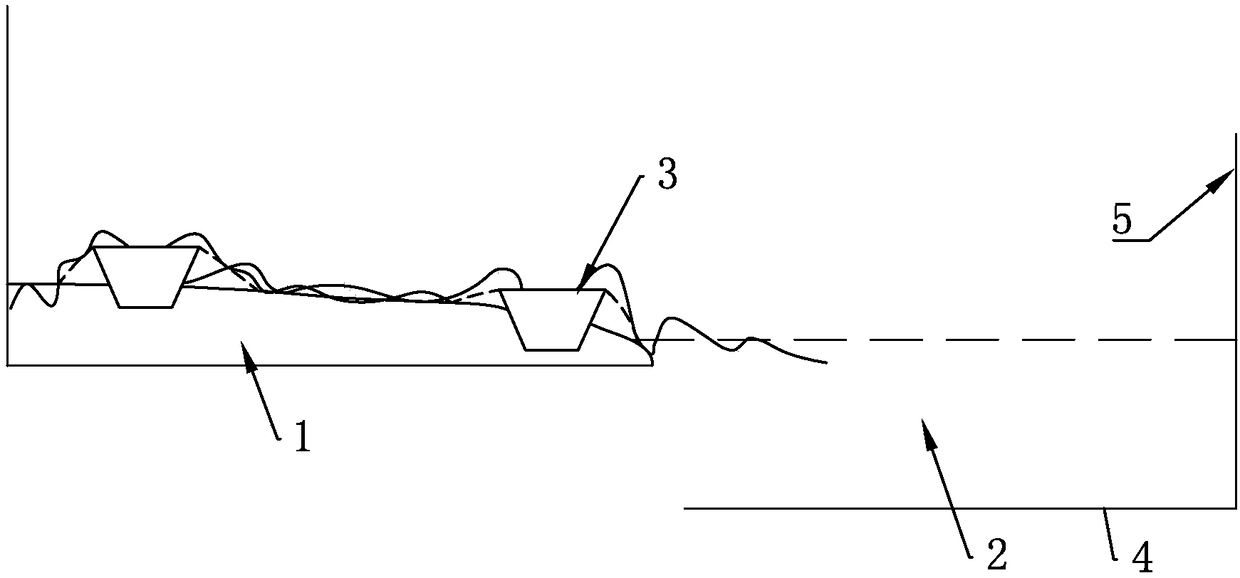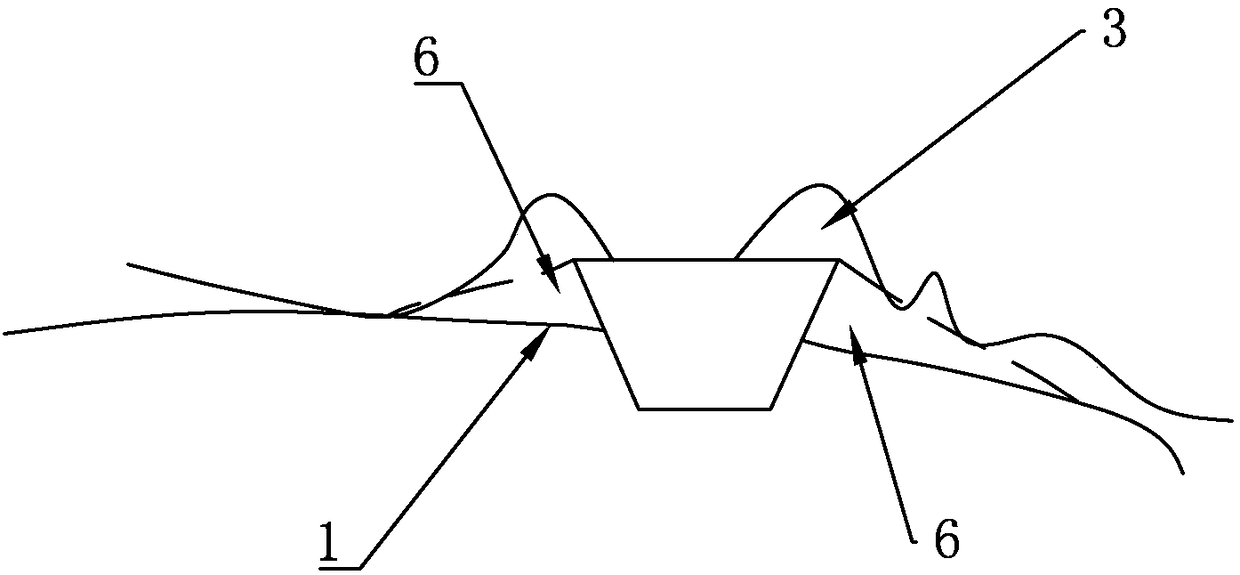Lake-land ecozone contamination remediation system and remediation method
A water-land ecotone and pollution remediation technology, which is applied in the restoration of polluted soil, chemical instruments and methods, biological water/sewage treatment, etc., can solve problems such as unsatisfactory remediation effects and deterioration of the ecological environment, and achieve improved remediation effects and Effects of restoration efficiency, reduction of restoration labor, and excellent growth characteristics
- Summary
- Abstract
- Description
- Claims
- Application Information
AI Technical Summary
Problems solved by technology
Method used
Image
Examples
Embodiment 1
[0037] as attached figure 1 and image 3 As shown, the water-land ecotone pollution repair system includes river bank polluted soil 1 and polluted water body 2, potted clonal plants 3 are buried in the river bank polluted soil 1 in the area to be repaired, and bottom nets 4 are set in the polluted water body 2 in the area to be repaired , Set up a fence net 5 at the border of the area to be repaired. Set slope slope 6 on the outside of the pot of the potted clonal plant and the position of the polluted soil, to avoid the breakage caused by the suspension when the plant grows from the inside of the pot to the outside.
[0038] The top of the pot of the potted clonal plant 3 is buried higher than the surface of the polluted soil 1 on the river bank.
[0039] The clonal plant is Neptonia chinensis.
[0040] The restoration method of the pollution restoration system in the above-mentioned water and land crisscross zone comprises the following steps:
[0041] (1) Cultivate plan...
Embodiment 2
[0055] Such as figure 2 and image 3 As shown, the water-land ecotone pollution restoration system includes riverbank polluted soil 1 and polluted water body 2, potted clonal plants 3 are buried in the riverbank polluted soil 1 in the area to be repaired, and a bottom net 4 is set in the polluted water body in the area to be repaired. Set fence net 5 at the boundary of the area to be repaired. Set slope slope 6 on the outside of the pot of the potted clonal plant and the position of the polluted soil, to avoid the breakage caused by the suspension when the plant grows from the inside of the pot to the outside.
[0056] The top of the pot of the potted clonal plant is buried higher than the surface of the polluted soil on the river bank.
[0057] The clonal plant is Neptonia chinensis.
[0058] The restoration method of the pollution restoration system in the above-mentioned water and land crisscross zone comprises the following steps:
[0059] (1) Cultivate plants
[006...
Embodiment 3
[0074] The same as the pollution repair system and repair method in the amphibious zone of embodiment 2, the difference is that if the scope of the area to be repaired is relatively large, the potted stolon type amphibious plants can be buried in rows on the polluted soil of the river bank, and the distance between each row is It is 120-150cm.
[0075] The above-mentioned embodiment is also applicable to other stolon-type amphibious plants such as Lishihe and Paspalum bistica. Transplant to the polluted environment to continue culturing, so as to repair the polluted environment.
[0076] Figure 4 A schematic diagram of clonal plant growth in the repair system described above is shown. The left box represents polluted soil, and the right box represents polluted water bodies. Clonal plants can expand, grow and restore in polluted soil, polluted water bodies, and water-shore exchange areas. When the contaminated soil area is large, the clonal plants can be arranged in rows. ...
PUM
| Property | Measurement | Unit |
|---|---|---|
| Length | aaaaa | aaaaa |
Abstract
Description
Claims
Application Information
 Login to View More
Login to View More - R&D
- Intellectual Property
- Life Sciences
- Materials
- Tech Scout
- Unparalleled Data Quality
- Higher Quality Content
- 60% Fewer Hallucinations
Browse by: Latest US Patents, China's latest patents, Technical Efficacy Thesaurus, Application Domain, Technology Topic, Popular Technical Reports.
© 2025 PatSnap. All rights reserved.Legal|Privacy policy|Modern Slavery Act Transparency Statement|Sitemap|About US| Contact US: help@patsnap.com



